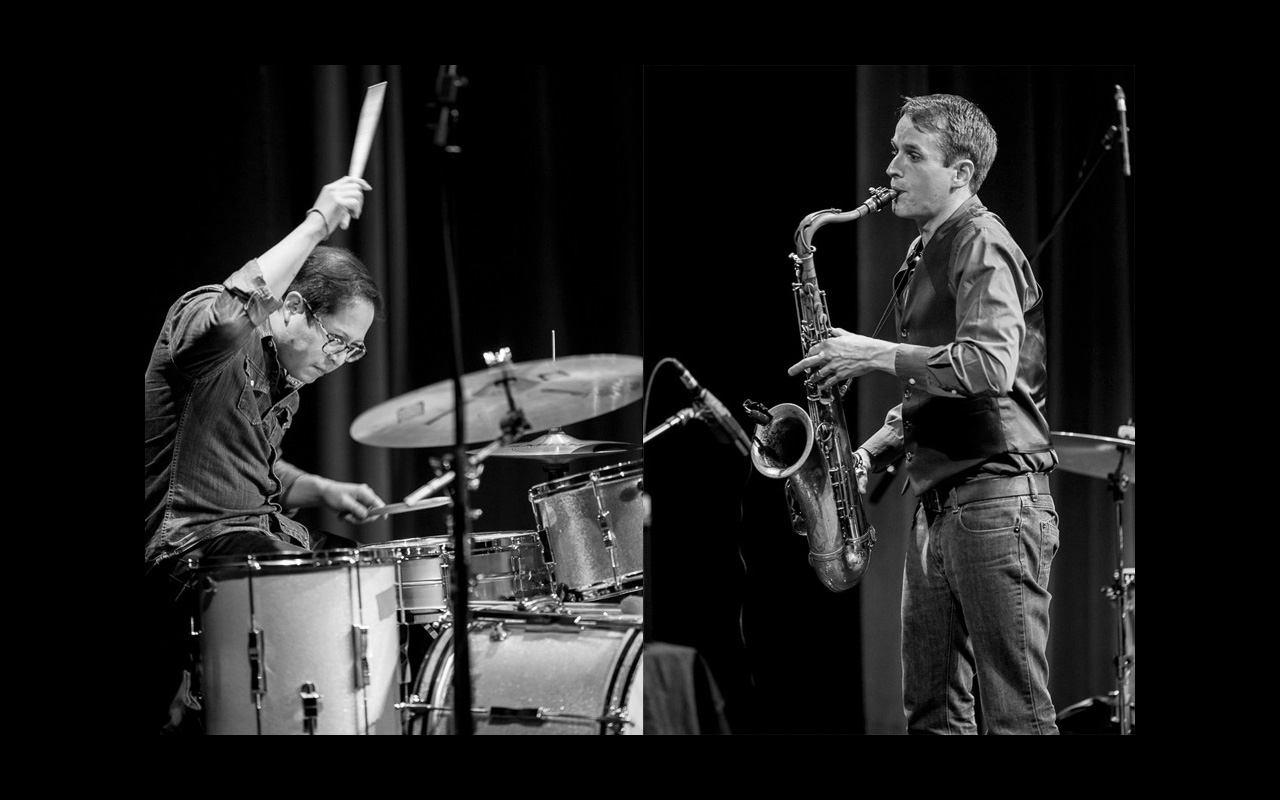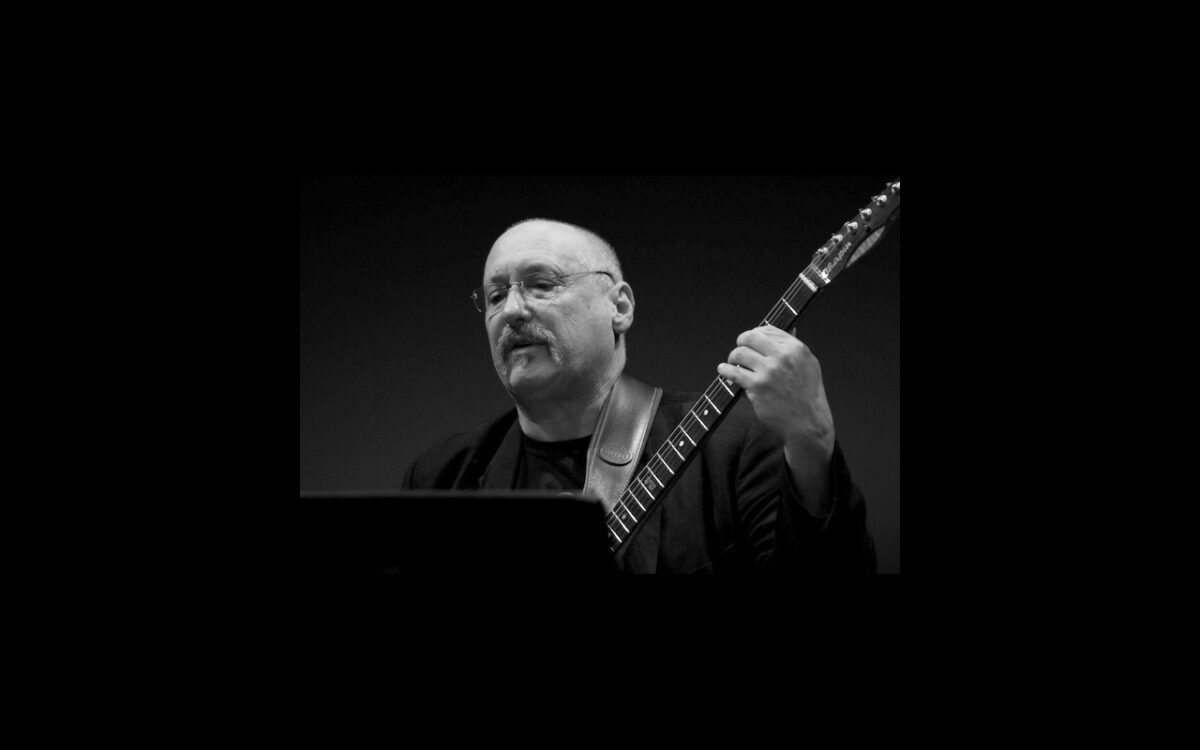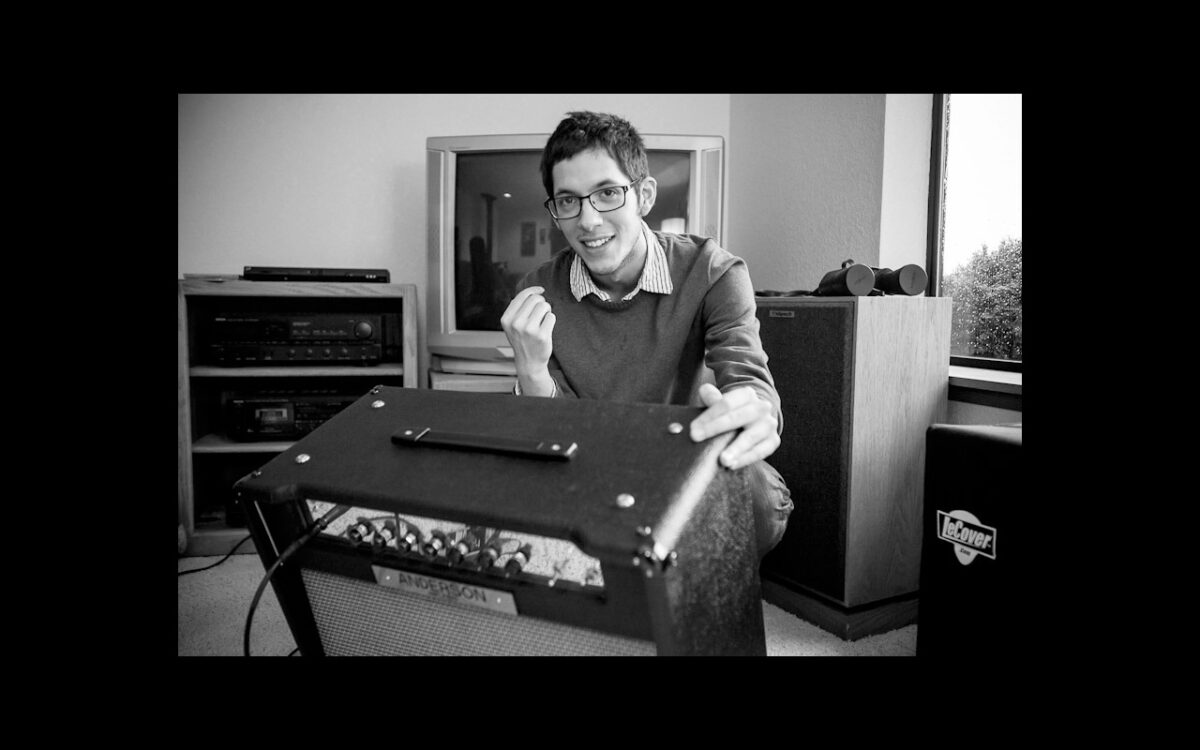
Bad Luck: (Left to Right) Chris Icasiano and Neil Welch. Photo by Daniel Sheehan.
July 10, 24 & 31, 8pm
Chapel Performance Space
Seattle musicians have new works in development all the time – at house concerts, at weekly jam sessions, in basement studios and at clubs and cafes around Seattle, including the Seamonster and the Royal Room. Jazz: The Second Century is this organization’s open question to that artistic community: so, what’s happening now?
Submissions are considered by a peer-review panel made up of musicians, journalists, former Second Century performers and concert producers. Earshot Jazz thanks all the unique and enterprising creative musicians of this city that submitted their work for consideration. Out of all the materials – a range of home recordings, studio materials, live video clips, full bands, duos and more – this year’s schedule follows below with occasional statements submitted with the artist materials.
– Schraepfer Harvey
July 10
Bad Luck
Bad Luck, a duo composed of drummer Chris Icasiano and saxophonist Neil Welch, is a scourging, polyrhythmic reach toward the farthest ranges of free jazz by way of gripping melodies and dense percussive attacks, with a personal and spiritual exploration at stake from each musician. The “hard-edged and audacious” (NY Jazz Record) duo performs all original compositions, with live loops and pedals to create an array of sounds.
Founding members of the Racer Sessions at Café Racer, Icasiano and Welch have been at the forefront of Seattle’s avant-garde movement in recent years. Two great improvisers with a tight chemistry, Bad Luck was named Earshot’s “Best Outside Jazz Group” in 2009.
2009’s “Northwest Instrumentalist of the Year” Icasiano is involved with many collaborative and creative projects, including Burn List, Japanese Guy, and Speak.
Welch recently released a project called 12 Moons. For all of 2013, Welch spent about two hours each day recording his improvisations, writing about them, finding a related image and posting the results on a website, neilwelch.com. One recording was made in the second floor bathroom of Benaroya Hall. Others came from a closet at Chief Sealth High School, the back seat of his car, the practice room hallway at South Whidbey High School, a room in his childhood home in Edmonds, his brother’s apartment in the Haight District of San Francisco, beside a creek in Oregon. One came from a highway pullout near Cannon Beach, recorded on day 249 (September 6). He is now extending the year-long exploration in a project labeled Continuous Resonance.
The duo is set to release a new album, Bad Luck Three, on September 30, and will be having a CD release show at the Chapel on October 1.
Sequoia Ensemble
Given its name, it should come as no surprise that Sequoia Ensemble draws much inspiration from natural landscapes. This collective’s sound is filled with earthy, lush textures and organic, colorful undertones, doing its best to capture the beautiful, powerful, awe-inducing natural world.
Formed in the spring of 2011 by tenor saxophonist Levi Gillis, Sequoia Ensemble includes Evan Smith on clarinet, Nick Rogstad on trombone, Chris Lewis on trumpet, Gus Carns on keyboard, Natalie Hall on cello, Abbey Blackwell on bass, and Jarred Katz on drums. The octet lists a wide variety of influences including Americana, indie rock, free jazz, and noise, and artists such as Bon Iver, Sigur Ros, Keith Jarrett, and Bill Frisell.
“The language that we have developed as a group in dealing with these influences comes together to create a new and progressive soundworld, with a sense of humanity, warmth and individuality in the music that ties it strongly to the jazz tradition,” says Gillis. “The way this music operates, and the way we operate as a band has a lot to do with spectra; the spectrum of consonance and dissonance, of acoustic and synthesized sounds, of freedom and constraint, of sonic texture. With this group, I wanted to create an environment which allowed us the ability to span across these spectra, exploring different facets and branches in order to relish each more fully.”
–Caitlin Peterkin

July 24
netcat
Table & Chairs trio netcat is Brandon Lucia, David Balatero, and Andrew Olmstead. Combining computers, synthesizer, and the Chango (a synthesizer that plays with light to convert video to audio in real time) with traditional instruments like drums and the cello, netcat explores the intersection between technology and free improvisation and brings jazz into the 21st century.
One track that exemplifies this is “The Internet Is An Apt Motherfucker,” off their first album Cycles Per Instruction. “This piece combines improvisational playing on cello, synth, and drums, with three main technological components,” explains Balatero. “The first component is a purpose-built synthesis/sequencer program. The piece opens with this program layering a base motif 64 times with a random time offset, creating a blurred, textural reference to the original motif that varies with each performance. The second component is a generative Markov model of phoneme sequences derived from Wikipedia and a collection of scientific papers. We use the model to generate novel, incoherent speech sounds. The third component is a sentiment-aware model of statements of preference derived from people’s actual statements of preference on the internet. We use the model to generate positive/negative sentiment couplets, recited in synthesized speech.”
On their website, netcat writes that their music “is the kind that calls for laying down on the floor with expensive headphones on and enjoying the solipsism. The flow of the round, sinusoidal bass of the Chango and synthesizer carry the listener on an electric current, through a confluence of sweeping, dramatic arcs on the cello and tympanic drumming.”
Whether you’re sitting or lying, netcat’s electronic performance promises to be electric.
–CP

Tim Volpicella – Michael Marcus
School may be out, but class is always in session for guitarist Tim Volpicella. In addition to Grammy nominated production work, and an impressive resume as a performer, Volpicella is committed to the continuation of the great tradition of apprenticeship in jazz. While acting as the music coordinator for San Jose Jazz, Volpicella also brought music education to children in the San Jose area through a local community youth outreach program. After relocating to the Pacific Northwest, Volpicella continues to teach guitar lessons, and will be joining up with bassist and school service coordinator at Hammond Ashley Studios Michael Marcus. California native Marcus, after studying at the New England Conservatory, moved to Seattle in the late nineties as a bassist for Teatro ZinZanni. The combo of Volpicella and Marcus will be rounded out by steel guitarist Lucien LaMotte, and drummer Max Wood, forging a swooning string laden quartet, that is sure to compliment the hall and grounds of the Chapel Performance Space on a summer night.
–Casey Adams

July 31
Gregg Belisle-Chi
In the annals of jazz mythology there is the iconic meeting of Charlie Parker and Igor Stravinsky – the great improviser and the great composer, meeting in the dim holdings of Birdland winter 1951. The marriage of improvisation and composition in jazz has been tumultuous as stratification, especially in the technological age, forces each discipline into its own respective camp. But guitarist Gregg Belisle-Chi looks to reinvigorate this relationship. Belisle-Chi sees improvisation and composition not as disparate entities at odds with one another, but two studies that serve each other – a view that is reflected in Belisle-Chi’s dark and rich fret board wanderings. The recordings from Belisle-Chi curated Racer Session last March exist in beautiful and thought-provoking ambiguity. What seems structured is loose and free; what is improvised is focused and informed. The future of Belisle-Chi’s music is one of exploration into the dark liminal spaces between composition and improvisation, and even the earliest fruits of this adventure are thoughtful and impacting.
Belisle-Chi performs solo and duo with vocalist Chelsea Crabtree.
–CA
Trimtab
R. Buckminster Fuller, the great 20th century architect and theorist said, “We are called to be architects of the future, not its victims.” The band Trimtab is the sonic answer to this call. Trimtab is the concept of guitarist Jason Goessl, who being heavily influenced by the ideas of Buckminster Fuller, saw an intrinsic link between architecture and musical form. A link he sought to express in sound. Initially formed in Minneapolis, Goessl moved west to Seattle and enlisted bassist Phil Cali and drummer Brian Oppel, to form the newest incarnation of Trimtab, and further realize his musical vision. Sweeping dynamic changes, woven through hypnotic musical tensions, all set against persistent grooves, the music of Trimtab is a unique blend of the concrete and the sonic, the physical and the ephemeral. There is a unique gravitational pull in their music, much like the unseen forces that send skyscrapers into the heavens and lift bridges across impossible expanses. Trimtab, if they are the true architects of the future, call on the past and the future alike to forge a sound whose gravitational center is the inescapable present. If they are answering the call, hopefully someone is listening.
–CA